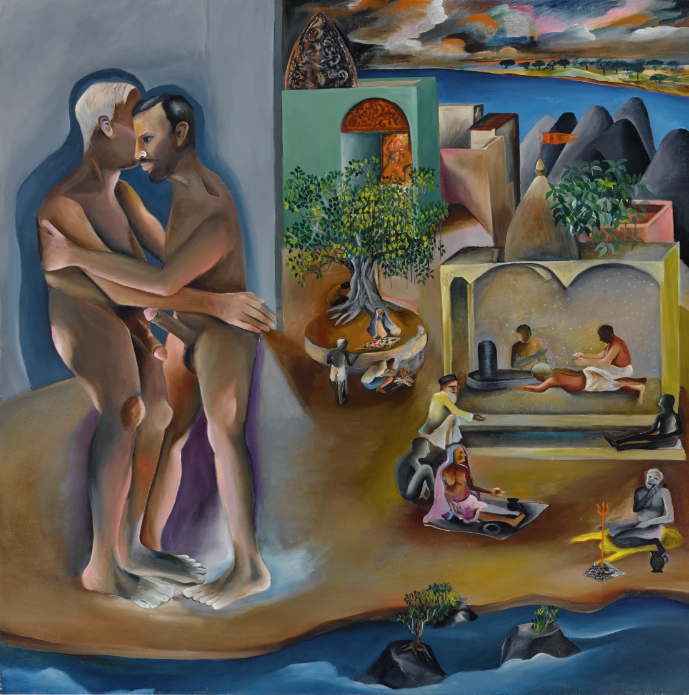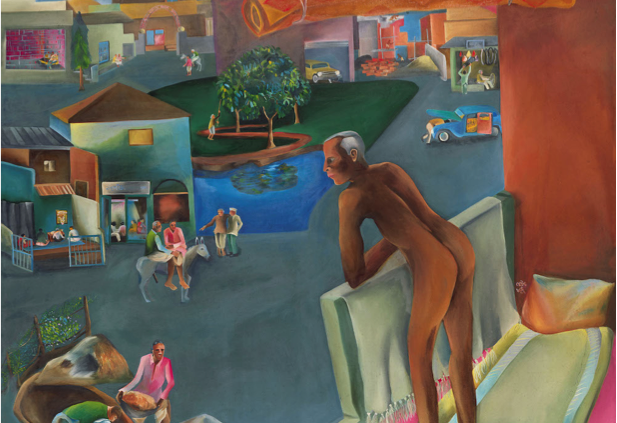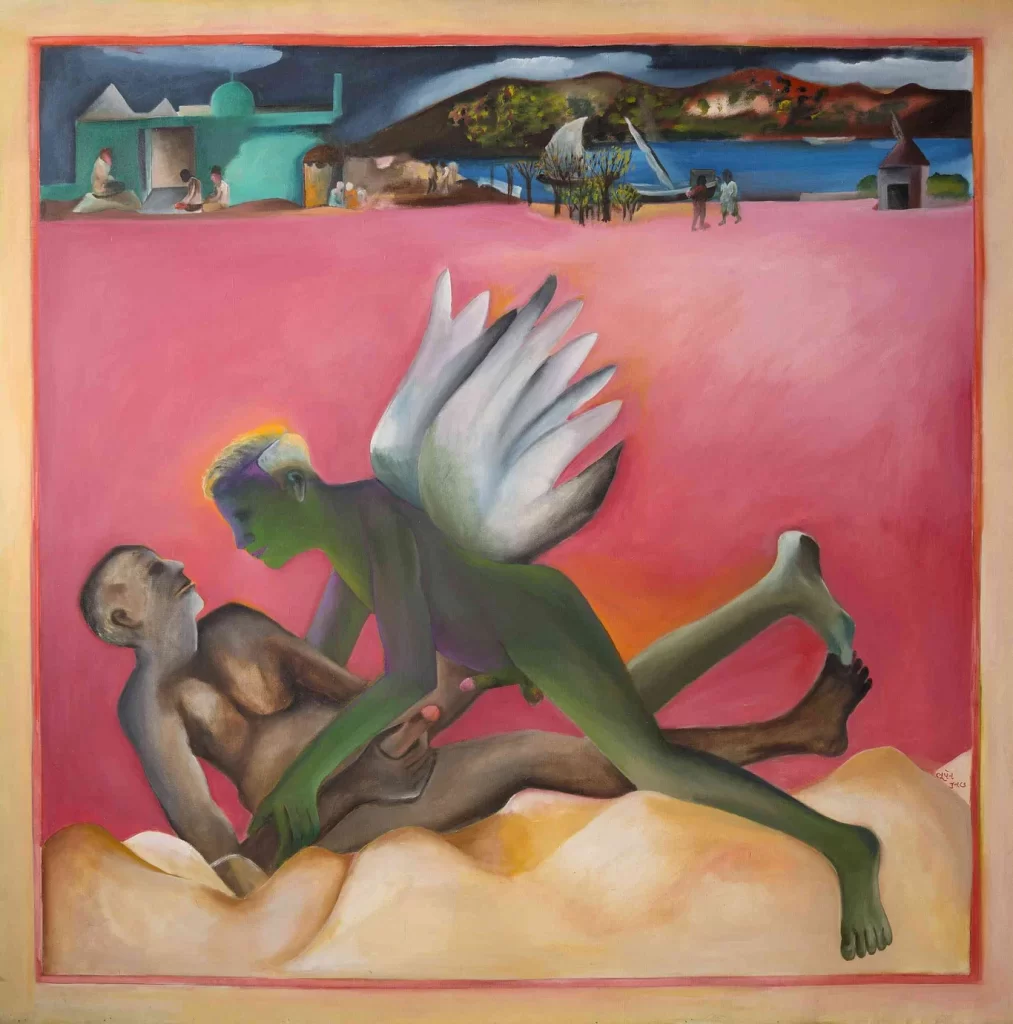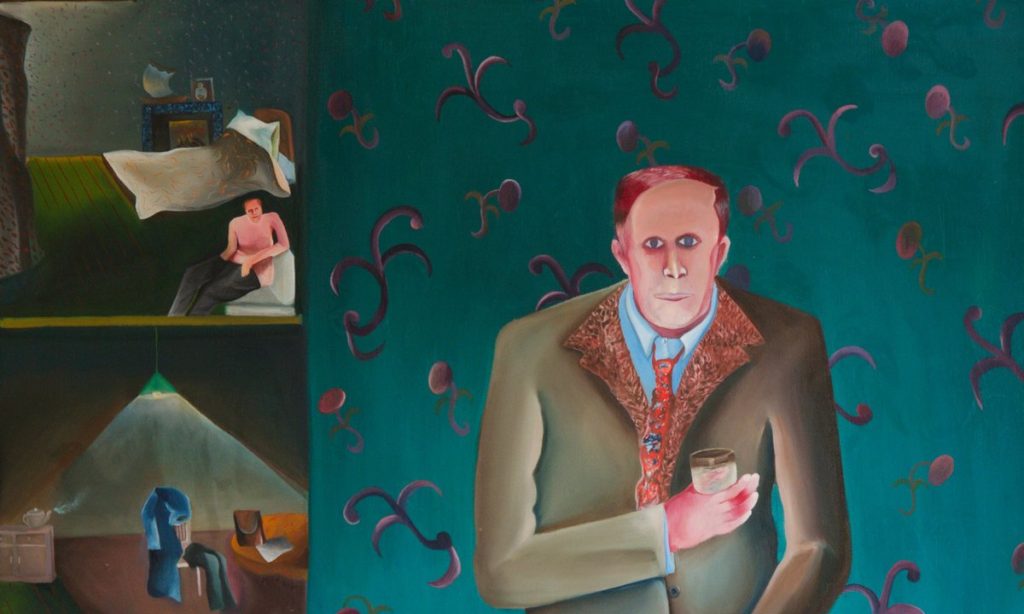It’s no secret that India’s rich cultural, religious, and social traditions—all shaped over thousands of years—have a profound influence on how people express their sexuality. This freedom of expression has many intriguing aspects in the Indian context, which includes historical sites like the temples of Khajuraho, Konark, and Ajanta. Scriptures such as the Kama Sutra and other Hindu texts provide extensive insights into the myriad aspects of sexuality. The tales of Indian thought are shown in those sculptures and texts, which also highlight the value of love, pleasure, and respect for one another in sexual relationships.
Issues like premarital sex, LGBTQ+ rights, and sexual education remain contentious topics, often viewed through the lens of morality and tradition. On the one hand, one side of the coin gives us enough freedom and visual-textual narratives of this expression. On the other hand, the other side of the coin sadly tells us how the subject of sex became a taboo and grapples with deeply ingrained social stigmas. Indian performers, writers, filmmakers, and artists are still delving into sexuality-related subjects in their works, occasionally going against social mores and taboos. Nevertheless, they frequently have to balance cultural sensitivity and artistic expression carefully.
The ‘social stigma’ around sex, sexual orientation, and freedom of expression in modern Indian art was questioned by Bhupen Khakhar (1934–2003). He is a well-known and influential artist who explores topics of identity, sexuality, and daily life uniquely.
Cultural theorist Ranjit Hoskote describes how some artists skillfully narrate or disguise their time in their artwork, try out prototypes, and arrange the messy realities of the world into patterns of encounter that are continually disarranged by experience in an essay titled “A Crazy Pair of Eyes,” which is part of a group exhibition titled “Touched by Bhuphen” in Gallery Mirchandani. Beyond that, the entirety of the work is a reflection of entrancing reflected time; the nature of their work does not conceal the artist’s particular voice.

According to Ranjit Hoskote, art for Bhupen Khakhar was never simply an expressive representation that would correspond at one remove to his lived experience; instead, art is a primary form of experience through which he embraced and memorialized the totality of his life. The totality of his life is initiated and shuffled by and in the time and social space, which reflects and coined the moral principles of the time. Bhupen hides in his works the vivid spirit of people, things, streets of his township, stories, and what he never tried to tell in a visual form.
For Indian art, the Khakhar era—the post-independence era during which Indian artists wrestled with issues of modernity, tradition, and identity—is critical. In Two Men (1992), Khakhar’s particular style—which combined Western inspirations with parts of Indian folk art—helped to create a new visual language in Indian art as he told the story of “men” in dreamlike water bodies that reflected the surrounding milieu of social settings of human life. Two men make love or intimately engage with each other, and many other people are looking or peeping at them.
Hoskote claims that throughout his life, Khakhar maintained an extraordinary capacity to remain concentrated on the concerns of the lonely self, regardless of whether he was among friends, in a social setting at home, or travelling through foreign territory with a group of business associates. At a period when homosexuality was heavily condemned in Indian society, Khakhar allowed himself to be exposed to the world of constraints. He is renowned for his candid and frequently funny examination of gay identity. His vibrant colours and figurative images subverted conventional ideas of gender and sexuality while providing an understanding and sympathetic depiction of LGBTQ+ lives.

As noted by Hoskote, Khakar’s Hitchcockian appearance in his paintings creates a mixed realm of realities and absence that tells about the artist himself and the people who surrounded him at the time; sometimes, we feel crowded room somewhere, and we understand that ‘Khakhar became celebrated for his seemingly whimsical yet deeply moving portraits of inner-city and provincial middle-class life, rendered in an idiosyncratic palette of cyan, pink, yellow and green, suggestive of the popular arts of the movie poster and the store signboard, Hoskote write.
Khakhar has brought to the Indian art scene a new awareness of its urban environment and its popular folk arts. He has drawn from calendar art and late Indian miniature and has moulded them to his purpose. At the same time, he was able to draw from Western art, going back to the period of the Renaissance. He has succeeded in achieving an artistic synthesis of great humanist relevance.
–Arun Khopkar
Film scholar Arun Khopkar quotes Gogol, ‘If your face is crooked, do not blame the mirror’ to convey Khakhar’s body of works into the spotlight and write, ‘Bhupen is the most compassionate. His work, with its many shades and moods, humour, and sometimes sfumato, chiaroscuro, shows us as we are, whether we like it or not.’ Khakhar explored various social and political themes in Indian society through his artwork, such as religious conflicts, urbanization, and class divides. His art demonstrated a genuine care for the underprivileged and a desire to bring attention to their challenges and goals. Arun Khopkar noted the element of middle-class people in art, which made him outlandish and fantastic in a way and fashion, combined with social hierarchy and hidden stories of the people with their guise.
How these narratives blend his artwork with modern Indian thought, Geeta Kapur writes, ‘subversive tugs extended this in social and sexual directions in the hands of an artist like Bhupen Khakhar. A regionalism developed in Baroda and it combined with the urban realism of Bombay. A representational schema for cross-referencing the social ground was realized. A reconfiguration also took place of the realist, the naive and the putatively postmodernist forms of figuration. Indian art, even as it ideologized itself along older progressivist terms, came in line with a selfconsciously eclectic and annotated pictorial vocabulary.’

Courtesy: Home Grown
In the 1970s and 80s, what made Indian contemporary art was a provocative stance that artists moved to pop art into representational excess of signs to renegotiate several traditions at once, as argued by Geeta Kapur, and stated by her: The intertextuality of their images, the art historical references, the popular idiom serve as a more confident avowal of a regional and properly differentiated national aesthetic.
Shanay Jhaveri’s theses, The Journey in My Head: Cosmopolitanism and Indian Male Self-Portraiture in 20th Century India– Umrao Singh Sher-Gil, Bhupen Khakhar, Raghubir Singh brings more attention to this topic, as she claimed, at his openings, parodying masculine stereotypes, and how the ‘self’ is changed over time, over lurking beneath the seeming playfulness of such transactions are deeply felt tensions and complexities. Khakhar would only come out as a homosexual a decade later and admitted in later interviews to the shame, guilt and internal turmoil he had experienced.
The most significant remark is Khakhar’s identity as having “multiple roles” while directing “attention away from himself as an individual’ artist’ and from the product of his paintings”.

In Indian art and social context, Khakhar carried a giant hurdle of self-identity and aspects that conquered the modernist aesthetic and, at the same time, progressive ideology. Khakhar, according to Geeta Kapur, turns the Indian art scene into local geographies with mock-mythic or, more properly, allegorical narratives within the space, establishes himself as the archetypal postcolonial artist, establishing and inverting his relationship to the twin legacies of the colonial and the modern in Indian art.
It is impossible to overvalue Bhupen Khakhar’s significant influence on contemporary Indian art. He broke through barriers and changed the course of Indian art with his audacious experimentation, creative vision, and unrelenting commitment to artistic expression. Their distinctive creative identity, which struck a deep chord with consumers in India and globally, was created by fusing traditional Indian aesthetics with Western inspirations.
Title credit: Shanay Jhaveri
A Chronicler of the Indian Everyday: Bhupen Khakhar and ‘Our’ Quotidian World

Krispin Joseph PX, a poet and journalist, completed an MFA in art history and visual studies at the University of Hyderabad.






